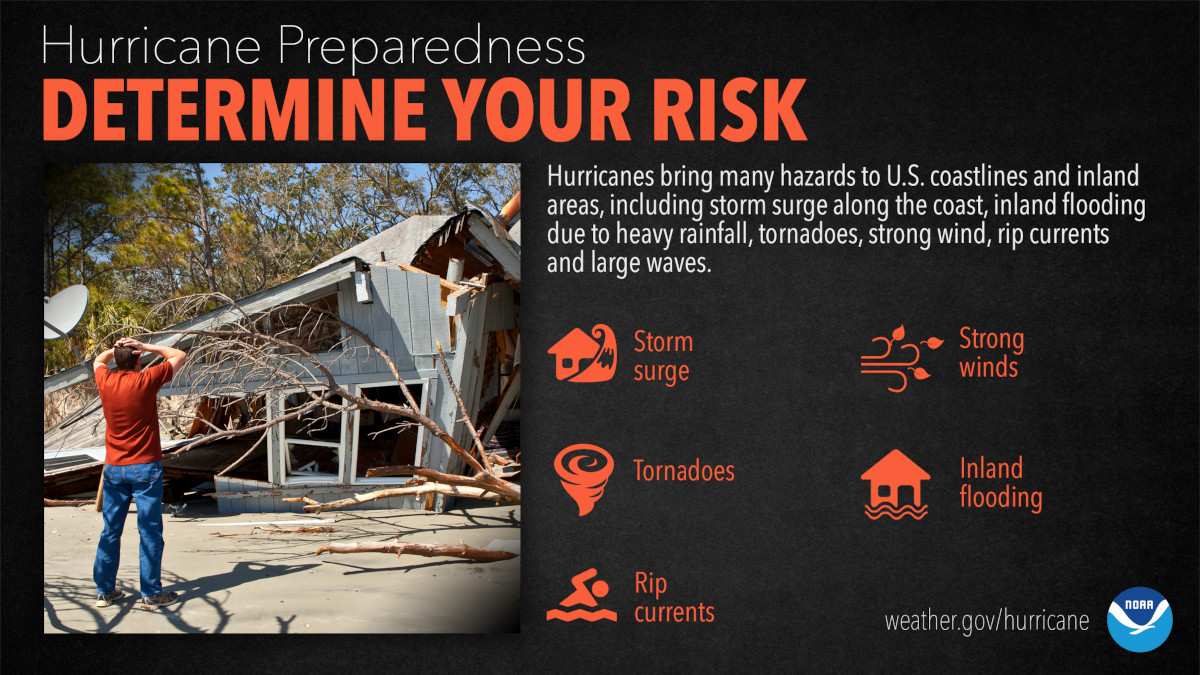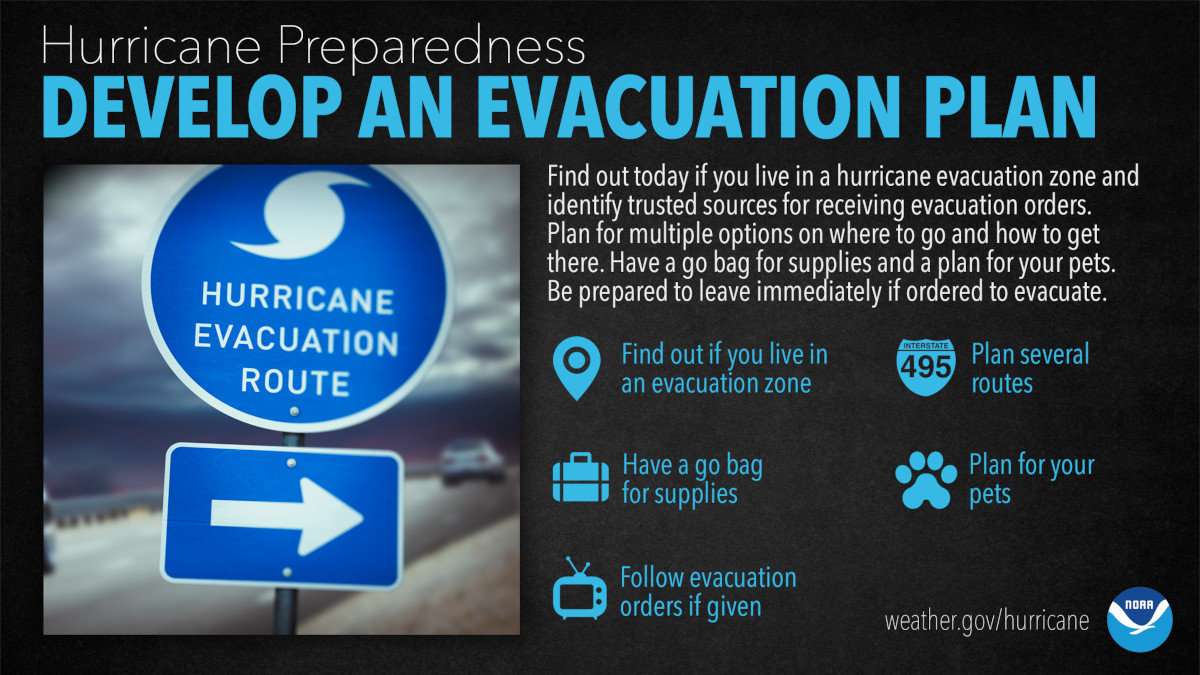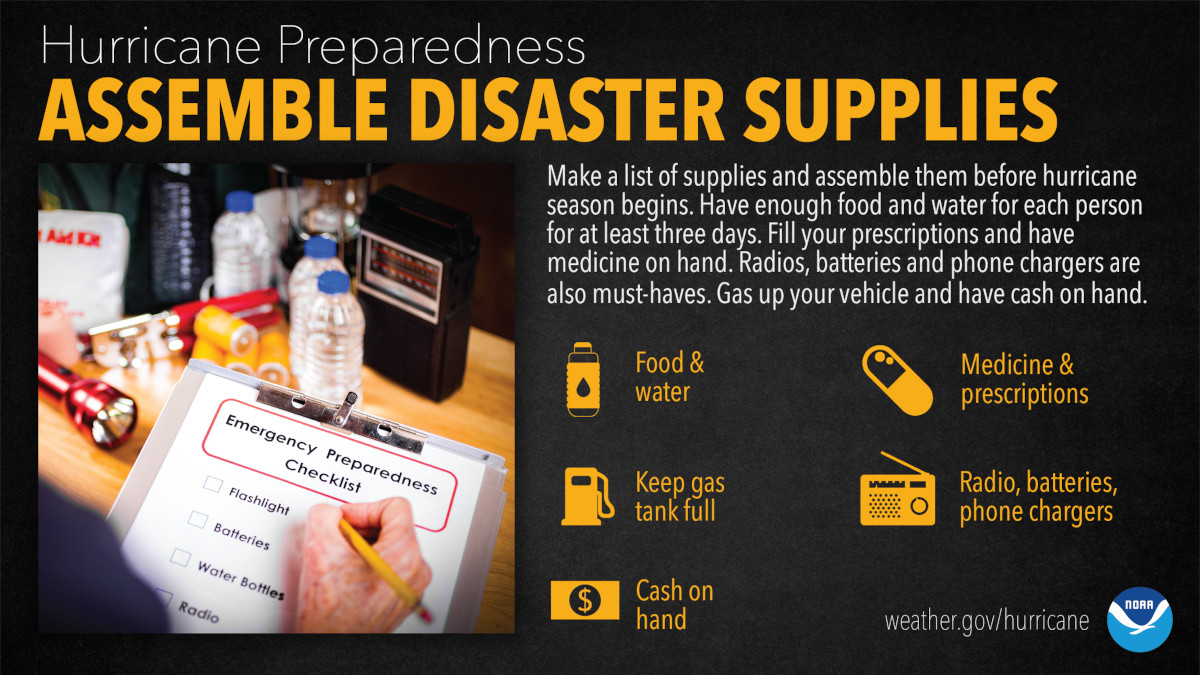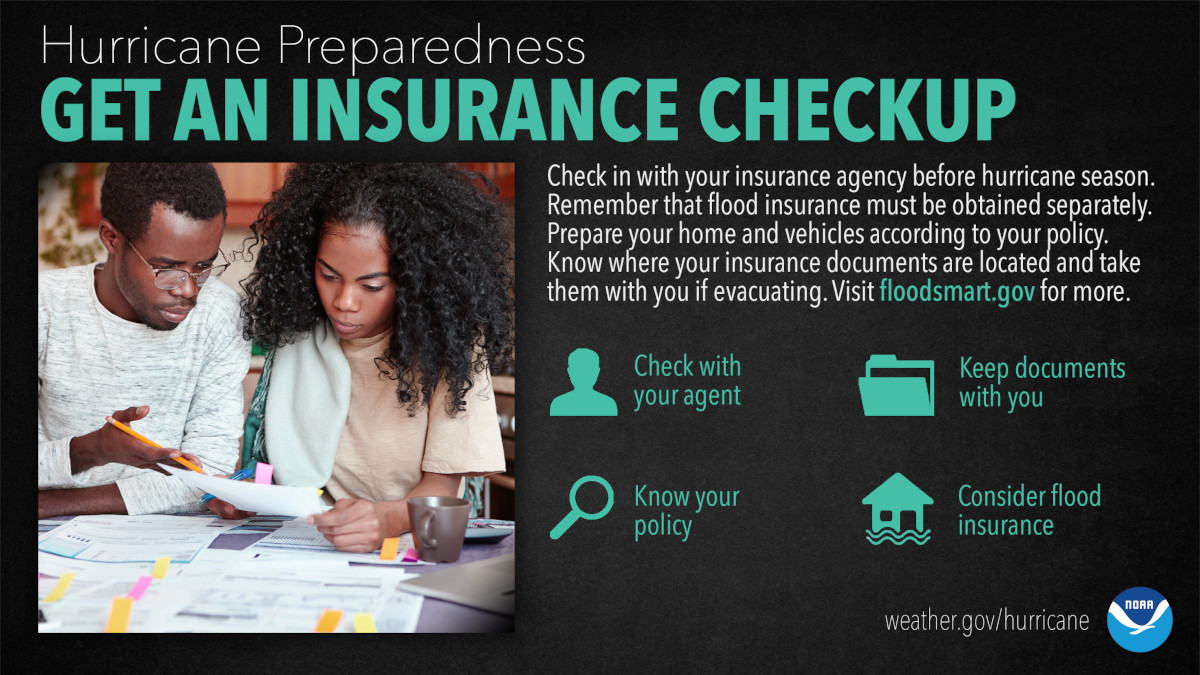7 Hurricane Preparedness Plan Checklist Items

Hurricane Preparedness Articles
- Hurricane Hazards and Risk Factors
- Make a Hurricane Evacuation Plan
- Hurricane Preparedness Kits and Supplies
- Hurricane Insurance Checkup and Updates
- Prepare Your Home for Hurricanes
- Help Neighbors with Hurricane Preparedness
- Complete Your Hurricane Preparedness Plan
- Emergency Preparedness Tips
- How to Prepare for a Power Outage
- 10 Tips to Survive a Hurricane Disaster
- FEMA Recommends a Generator
- Hurricane Disaster Preparedness
National Hurricane Preparedness is part of the Weather-Ready Nation program of the National Weather Service, an agency of the National Oceanic and Atmospheric Administration (NOAA) which also includes the National Hurricane Center. NOAA is an agency within the United States Department of Commerce.
Tropical Cyclones Include:
- Major Hurricanes - The most powerful storms on earth with sustained winds from 111 to more than 200 MPH.
- Hurricanes - Powerful storms with sustained winds of at least 74 MPH.
- Tropical Storms - 39 to 73 MPH. The NHC names a storm once it reaches Tropical Storm Strength.
- Tropical Depression - A storm less than 39 MPH with tropical characteristics (it's energy comes primarily from the ocean.)
Important Facts:
- Atlantic Hurricane Season Begins June 1 and Ends November 30
- Hurricanes and Tropical Storms Can Form All Year
- Storm Surge and Flooding Cause the most damage and the most fatalities.
- Hurricane Preparedness prevents injury and death and reduces damage.
Hurricane Preparedness allows people and businesses at risk for a hurricane or tropical storm disaster to prevent deaths, prevent injuries, and mitigate damage.
Tropical Cyclones may extend hundreds of miles from the storm center and cover a swath of more than 1000 miles. They are the largest and most powerful storms on earth. While many people dismiss the dangers of tropical storms, they can drop devastating amounts of rain over relatively short periods that leads to flooding. Hurricanes and Major Hurricanes combine wind and water hazards that destroy neighborhoods and cities.
 In 2021, the NOAA moved the three-decade data set from 1981-2010 to 1991-2021, which shifted the average hurricane season numbers upward to include 14 named storms, 8 hurricanes, and 3 major hurricanes. While the increase in numbers set the bar a little higher for an average season, it also reflects the higher number of named storms experienced in the last decade and the number of above average seasons from 2011 to 2020.
In 2021, the NOAA moved the three-decade data set from 1981-2010 to 1991-2021, which shifted the average hurricane season numbers upward to include 14 named storms, 8 hurricanes, and 3 major hurricanes. While the increase in numbers set the bar a little higher for an average season, it also reflects the higher number of named storms experienced in the last decade and the number of above average seasons from 2011 to 2020.
An average season now puts people and business in states bordering the Atlantic Ocean and Gulf of Mexico at a higher risk for hurricane or tropical storm.
Higher risks make hurricane preparedness more important than ever before.
![]()
Did you know you can buy an NOAA Weather Radio? Models cover a wide range of costs, but one that keeps you informed should set you back less than $30.00. Choose one that fits your needs and works on an AC Outlet and on Batteries. Some models now work on a USB port. Hand cranks are great if you can crank. Some come with more bells and whistles than useful function. Keep it simple. Set it up. Stay informed. Batteries, Hand Cranks, Car Adapters, USB Ports, keep the radio portable so you can receive alerts from your local weather service station.
Determine Your Hurricane Risk
 If you live in any state on the East Coast or Gulf Coast, Hurricanes and Tropical Storms put your home and family at risk. Nearness to the ocean and inland waterways increases your risk. High winds make interesting news footage, but most hurricane and tropical storm deaths, damage, and injuries involve water. Tornadoes spawned by the cyclone add to the chaos and damage.
If you live in any state on the East Coast or Gulf Coast, Hurricanes and Tropical Storms put your home and family at risk. Nearness to the ocean and inland waterways increases your risk. High winds make interesting news footage, but most hurricane and tropical storm deaths, damage, and injuries involve water. Tornadoes spawned by the cyclone add to the chaos and damage.
Rip Currents can form while a hurricane is far offshore and out of sight. Torrential rains cause flash floods and inland flooding. Storm surge and flooding cause more deaths and damage than all other factors combined.
Determine Your Hurricane Risks
Develop an Evacuation Plan
 The order to evacuate may come at any time before or after a hurricane watch or hurricane warning. Planning before an evacuation order saves time and gives you options. Every plan should include multiple destinations with options for local shelters, relatives outside the evacuation zone, motel or hotel accommodations, or even a vacation home.
The order to evacuate may come at any time before or after a hurricane watch or hurricane warning. Planning before an evacuation order saves time and gives you options. Every plan should include multiple destinations with options for local shelters, relatives outside the evacuation zone, motel or hotel accommodations, or even a vacation home.
Know your evacuation routes. After an evacuation order, you may find other routes have closed except to local residents. Heavy traffic along evacuation routes can make the trip time consuming and stressful. The sooner you leave, the easier and faster your travel will be.
Include your pet in your plans. Many shelters don’t accept pets. Don’t leave them behind.
Assemble Disaster Supplies
 Build your hurricane preparedness kit and supplies before the season arrives and you won’t have trouble finding the things you need when the National Hurricane Center issues the first watches.
Build your hurricane preparedness kit and supplies before the season arrives and you won’t have trouble finding the things you need when the National Hurricane Center issues the first watches.
Your family needs supplies to get through the storm and possibly for a long time afterward. Nonperishable food and water should last a minimum of three days, but a week is much better. What about electricity and cash?
If you evacuate to a shelter, you’re going to need items like face masks, sanitizer, bar soap, and other COVID related items.
A COVID Vaccination for all family members protects them in a shelter where social distancing may not be enough to keep everyone healthy.
Hurricane Preparedness Supplies and Planning
Get an Insurance Checkup
 Insurance is great, if you have it. Some policy changes won’t take effect for days or even a month or longer. Try to call an insurance company for an upgrade after a hurricane warning and you won’t get very far. Check your insurance before the hurricane season starts.
Insurance is great, if you have it. Some policy changes won’t take effect for days or even a month or longer. Try to call an insurance company for an upgrade after a hurricane warning and you won’t get very far. Check your insurance before the hurricane season starts.
Homeowner and Renter Insurance has limitations. Flooding by any source of water outside your home is never covered by homeowner insurance. Flooding causes tens of thousands of dollars of damage to a home. The National Flood Insurance Program is available to all homeowners in the United States.
Insurance Checkup for Flood and Storm Damage
Strengthen Your Home
 Making the right changes to your home’s structure isn’t as costly as you may think and it may save your life, your home, or both. Windows and doors, especially garage doors and patio doors are vulnerable openings. Experts consider the garage door as the weakest link to keeping your home intact.
Making the right changes to your home’s structure isn’t as costly as you may think and it may save your life, your home, or both. Windows and doors, especially garage doors and patio doors are vulnerable openings. Experts consider the garage door as the weakest link to keeping your home intact.
Install storm shutters and hurricane rated garage doors. Buy and cut plywood in advance for each window with lag bolt anchors. Plywood and lumber sell fast in the days before a storm hits. Buy and Build in advance.
Prepare Your Home Against a Hurricane
Help Your Neighbor
 It’s more than an act of kindness. It’s a part of the neighborhood community that benefits everyone including yourself.
It’s more than an act of kindness. It’s a part of the neighborhood community that benefits everyone including yourself.
Many Americans rely on neighbors after a disaster. Helping neighbors prepare or even just make them aware of the things they need to do to prepare can benefit the entire neighborhood.
Elderly or disabled neighbors may need help moving loose items off patios and into garages. Helping them board up windows and garage doors may keep their roof on and stop it from crashing into your house.
Complete a Written Plan
 A Hurricane Preparedness Plan takes time and involves more than a few simple bullet points. A plan and preparation make it easy to react when the hurricane threatens.
A Hurricane Preparedness Plan takes time and involves more than a few simple bullet points. A plan and preparation make it easy to react when the hurricane threatens.
When the National Hurricane Center issues a hurricane watch, tropical storm conditions will arrive in about 48 hours or less from the time the watch is issued. The NHC issues Hurricane Warnings 36 hours in advance of tropical storm conditions. Once tropical storm conditions arrive, all preparations and evacuations should be completed.
Deciding to ride out the storm or leave before the hurricane arrives is easier when everything is ready in advance. With plans in place, simply choose which one to implement. Leave or Stay, you’re ready and won’t worry about stores running out of supplies or lumber, or where you will go and what to do with the family pets, because you accounted for everything before hurricane season arrived.
If you wait for a hurricane watch, you won’t finish before it’s time to leave or the hurricane arrives.
